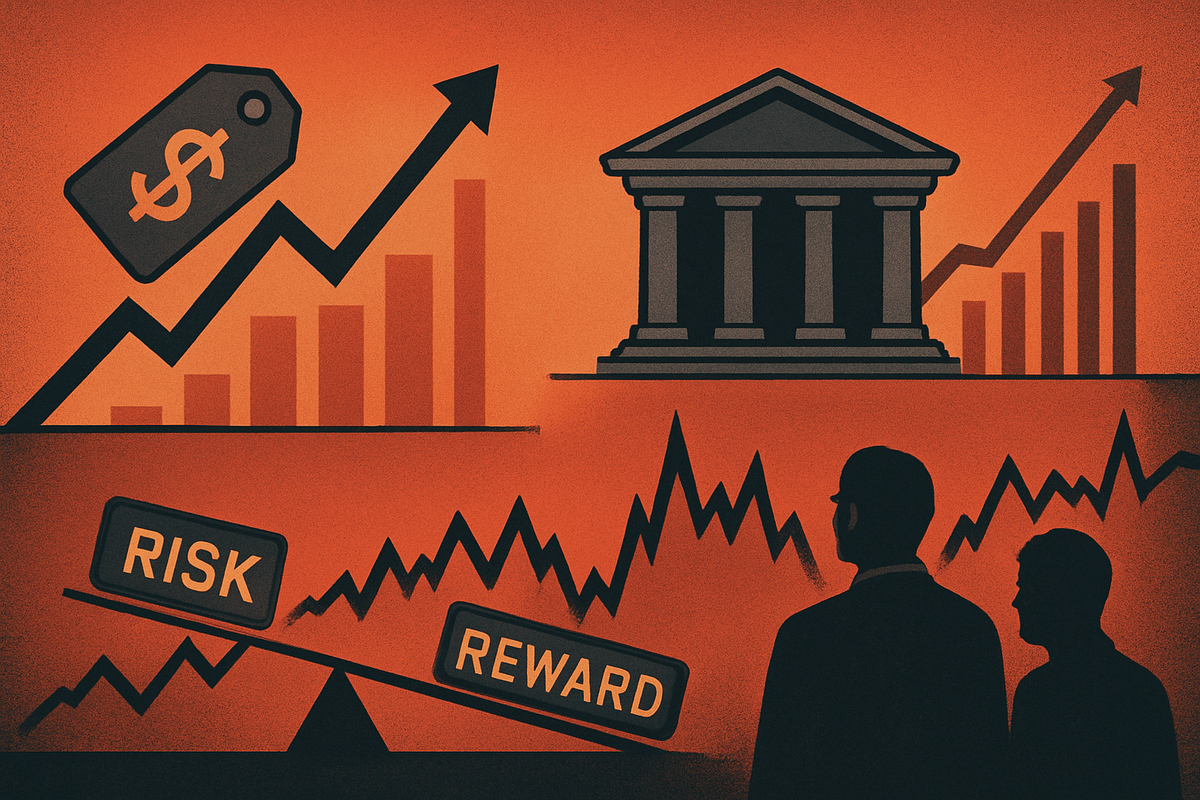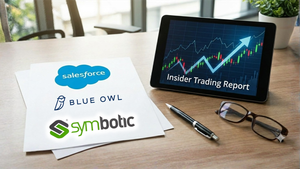
As November 2025 unfolds, global financial markets find themselves navigating a treacherous landscape defined by stubbornly high inflation and an uncertain, often hawkish, interest rate outlook. This potent combination is fostering a pervasive sense of caution among investors, driving increased volatility, and prompting a significant "risk-off" sentiment across various asset classes. The immediate implications are clear: a re-evaluation of investment strategies, a scramble for defensive positions, and a heightened focus on corporate resilience in the face of rising costs and tighter credit conditions.
The persistent pressure from elevated prices, particularly in key economies, continues to overshadow central bank efforts to restore price stability. Coupled with central banks' resolute stance on maintaining restrictive monetary policies, the environment is forcing a recalibration of growth expectations and asset valuations, making for a complex and challenging end to the year for market participants worldwide.
Macroeconomic Headwinds Intensify: A Deep Dive into Inflation and Interest Rate Dynamics
The current market turmoil is deeply rooted in the confluence of sustained inflationary pressures and the consequential actions, or anticipated actions, of global central banks. As of November 2025, inflation remains a formidable challenge. In the United States, the Consumer Price Index (CPI) for the 12 months ending September 2025 registered 3.0%, with daily "nowcasts" for November anticipating a year-over-year CPI of approximately 2.97% and a core CPI (excluding volatile food and energy) of 2.95%. These figures consistently hover above the Federal Reserve's (NYSE: FED) (NASDAQ: FED) (the "Fed") 2% target, fueling concerns that inflation expectations could become unanchored. Projections even suggest that U.S. GDP growth could decelerate, with inflation potentially nearing 4% by year-end 2025, partly influenced by higher import costs.
The timeline leading to this moment has been characterized by a series of data points reinforcing the "higher-for-longer" narrative for interest rates. Hotter-than-expected October inflation data (3.5%) and a surprisingly strong jobs report (210,000 new positions) significantly diminished expectations for a December Fed interest rate cut, with market-implied probabilities falling from 70% to 40-50%. Hawkish statements from key Fed officials have further cemented this outlook, underscoring the central bank's unwavering commitment to price stability even amidst signs of a softening labor market. While the Bank of England (BoE) (NASDAQ: BOE) is anticipated to cut rates by 25 basis points in December, signaling potential easing, the European Central Bank (ECB) (NASDAQ: ECB) is expected to maintain steady policy rates, highlighting a divergent global monetary policy landscape.
Initial market reactions have been swift and decisive. Global financial markets are experiencing heightened volatility, with the CBOE Volatility Index (VIX) (CBOE: VIX) notably climbing, reflecting increased market fear. Investors are exhibiting a pronounced "risk-off" behavior, leading to potential losses in US stock futures. The US dollar is strengthening as a safe-haven asset, benefiting from diminished expectations for immediate Fed rate cuts, while gold, a non-yielding asset, struggles under the weight of a strong dollar and the prospect of higher-for-longer interest rates. Despite this caution, some analyses suggest that market pullbacks in 2025 have been relatively shallow, partly due to "Fear Of Missing Out" (FOMO) among retail "dip buyers" and underlying resilient economic data. However, this resilience faces a significant test as macroeconomic headwinds intensify.
Companies Navigating the Storm: Potential Winners and Losers
The current macroeconomic environment of persistent inflation and elevated interest rates creates a clear bifurcation in the corporate landscape, distinguishing between companies poised to weather the storm and those likely to face significant headwinds. Understanding these dynamics is crucial for investors.
Potential Losers:
Companies heavily reliant on external borrowing, particularly small-cap growth companies, are among the most vulnerable. Higher interest rates translate directly into increased borrowing costs, eroding profitability and hindering expansion plans. Sectors like technology and consumer discretionary often house many growth-oriented firms that have historically thrived on cheap capital. While large-cap tech giants with strong balance sheets might fare better, smaller, unprofitable tech firms could see their valuations compress significantly. Companies with weak pricing power, unable to pass on rising input costs to consumers, will also struggle with margin compression. This includes some retailers and manufacturing firms in highly competitive markets. Furthermore, companies with significant long-term debt maturing soon will face refinancing at much higher rates, impacting their financial health.
Potential Winners:
Conversely, certain sectors and companies are better positioned to thrive or at least remain resilient. Financial institutions, particularly banks (e.g., JPMorgan Chase (NYSE: JPM), Bank of America (NYSE: BAC)), often benefit from higher interest rates as their net interest margins expand—the difference between what they pay on deposits and earn on loans. However, a significant economic downturn could offset these gains through increased loan defaults. Value stocks and companies with strong, stable cash flows and robust balance sheets are generally favored in this environment. Utilities (e.g., NextEra Energy (NYSE: NEE), Duke Energy (NYSE: DUK)) and consumer staples (e.g., Procter & Gamble (NYSE: PG), Coca-Cola (NYSE: KO)) are typically considered defensive plays, as demand for their products and services remains relatively inelastic regardless of economic conditions. Companies with strong pricing power, able to effectively pass on increased costs to customers, will also maintain or even improve their profit margins. This can include certain luxury brands or firms with dominant market positions. Finally, private credit strategies, particularly infrastructure debt, are gaining appeal for their attractive yields and defensive characteristics, offering stability in volatile conditions and presenting opportunities for investors seeking alternatives to traditional equities.
Wider Significance: Echoes of the Past and Future Implications
The current macroeconomic landscape, characterized by persistent inflation and a hawkish central bank stance, carries significant wider implications that extend beyond immediate market reactions. This environment fits into a broader trend of recalibrating global monetary policy after an extended period of ultra-low interest rates and quantitative easing. Central banks worldwide are grappling with the aftermath of pandemic-era stimulus and supply chain disruptions, trying to engineer a "soft landing" – a delicate balancing act of taming inflation without triggering a severe recession. The divergence in policy approaches, with the Fed maintaining a firm grip while the Bank of England considers easing, highlights the localized nature of inflation drivers and economic resilience.
Potential ripple effects on competitors and partners are substantial. Companies with weaker balance sheets or higher debt loads will find it increasingly difficult to compete with more financially robust peers. Supply chain partners may face higher financing costs, potentially leading to disruptions or increased prices for upstream components. The pressure on consumer spending from inflation and higher borrowing costs could also impact downstream demand, affecting retailers and service providers. Regulatory or policy implications are also on the horizon. Governments might face increased pressure to implement fiscal policies to alleviate the burden of high living costs, potentially leading to debates around subsidies, tax cuts, or wage controls, which could further complicate the inflation picture.
Historically, periods of persistent inflation coupled with rising interest rates have often led to market corrections and economic slowdowns. Comparisons are frequently drawn to the late 1970s and early 1980s, when the Federal Reserve, under Chairman Paul Volcker, aggressively raised interest rates to combat rampant inflation, ultimately triggering a recession but successfully bringing prices under control. While the current situation has distinct differences, the core challenge of balancing price stability with economic growth remains eerily similar. The "stagflation" fears – a combination of stagnant economic growth and high inflation – are a recurring theme, though many economists argue that the underlying structural factors today are different from those of the 1970s. Nevertheless, these historical precedents serve as a potent reminder of the potential for prolonged economic adjustments when inflation proves stubborn.
What Comes Next: Navigating the Uncertain Path Ahead
The path forward for financial markets amidst these macroeconomic crosscurrents is fraught with both challenges and potential opportunities. In the short-term, markets are likely to remain highly sensitive to incoming economic data, particularly inflation reports and employment figures. Any signs of inflation cooling more rapidly than expected, or a significant deterioration in labor market conditions, could prompt a pivot in central bank rhetoric and policy, potentially triggering a market rally as investors price in earlier rate cuts. Conversely, continued hotter-than-expected data will reinforce the "higher-for-longer" narrative, sustaining volatility and pressure on risk assets. Equities are expected to see continued sideways trading as investors weigh these developments.
In the long-term, companies will need to demonstrate exceptional adaptability and strategic foresight. Potential strategic pivots include a renewed focus on operational efficiency, cost control, and supply chain resilience to mitigate inflationary pressures. Businesses may also need to prioritize deleveraging and strengthening their balance sheets to reduce exposure to higher borrowing costs. For investors, market opportunities may emerge in sectors that prove resilient to inflation, such as those with strong pricing power, or in defensive assets like high-quality bonds (once interest rates stabilize or begin to decline). Private credit and alternative investments are also likely to continue attracting capital seeking uncorrelated returns and attractive yields.
Potential scenarios and outcomes range from a "soft landing," where inflation gradually recedes without a severe recession, to a more challenging "hard landing" involving a significant economic downturn. A "no landing" scenario, where inflation remains elevated and growth stays robust, forcing central banks to maintain restrictive policies for an extended period, is also a possibility that would continue to challenge equity valuations. Investors should prepare for continued divergence in sector performance, with a premium placed on companies that can consistently deliver earnings growth and maintain healthy margins in a higher-cost environment. The interplay between monetary policy, fiscal policy, and geopolitical events will dictate the ultimate trajectory, making flexibility and a long-term perspective paramount.
Comprehensive Wrap-up: Key Takeaways and Investor Vigilance
In summary, the current financial market environment in November 2025 is unequivocally shaped by the enduring influence of persistent inflation and a challenging interest rate regime. Key takeaways include the Federal Reserve's unwavering commitment to its 2% inflation target, even at the risk of slower economic growth, and the resulting "higher-for-longer" interest rate outlook. This has translated into heightened market volatility, a discernible "risk-off" sentiment, and a clear divergence in performance between companies with strong balance sheets and pricing power versus those more susceptible to rising costs and tighter credit.
Moving forward, the market will remain acutely sensitive to macroeconomic data, particularly inflation and employment figures, which will guide central bank policy decisions. Investors should assess the market with a critical eye, prioritizing companies demonstrating resilience, strong cash flow generation, and the ability to pass on costs. The era of cheap capital appears to be firmly in the rearview mirror, necessitating a shift towards value-oriented investing and a focus on fundamental strength.
What investors should watch for in the coming months includes any significant shifts in central bank rhetoric, concrete evidence of inflation consistently trending towards target levels, and the trajectory of corporate earnings in a higher-cost environment. Geopolitical developments and their potential impact on energy and commodity prices will also play a crucial role. Maintaining a diversified portfolio, emphasizing quality, and adopting a long-term perspective will be essential strategies for navigating these turbulent waters. The current period is not merely a transient phase but rather a significant recalibration of economic and market dynamics, demanding vigilance and strategic adaptation from all market participants.
This content is intended for informational purposes only and is not financial advice






